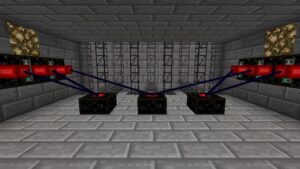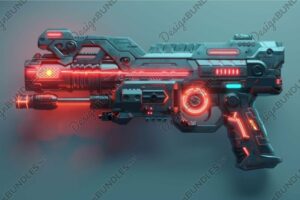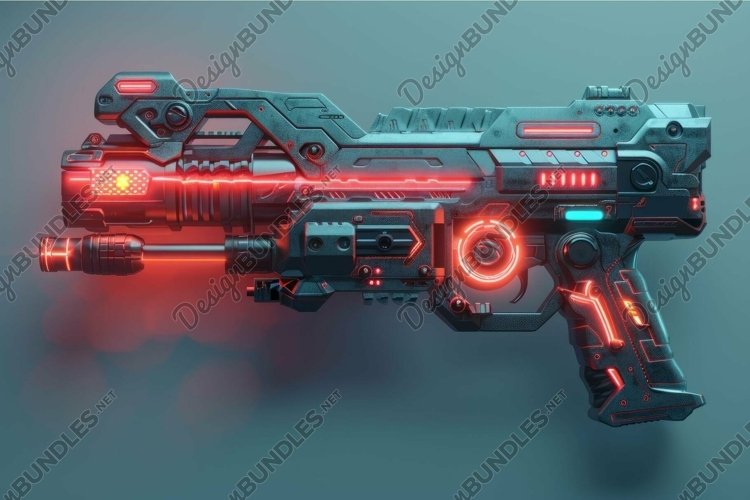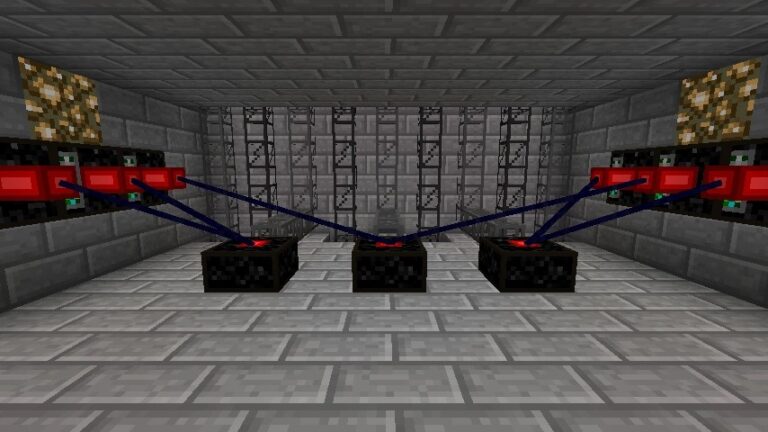In the vast and varied landscape of video games, few elements are as fundamental to the player experience as the tools they wield. From a simple pixelated projectile to a meticulously crafted, physics-based firearm, a weapon is more than just a means to an end. It is the primary point of interaction with the game world, a conduit for player expression, and the source of some of the most visceral and memorable moments in Gaming History. The “feel” of a weapon—that intangible combination of sound, animation, and impact—can elevate a good game to a legendary one. This deep dive explores the technical and design evolution of video game weaponry, dissecting what makes an arsenal truly satisfying and tracing its lineage from the arcades to the sprawling virtual worlds of today.
The Genesis of the Power Fantasy: From Pixels to Polygons
The journey of weapon design is intrinsically linked to the evolution of Gaming Hardware. In the nascent days of the medium, limitations dictated simplicity. Yet, even within these constraints, developers laid the groundwork for the core principles of feedback and player empowerment that define weapon design to this day.
The 8-Bit Arsenal: Function Over Form
Early arcade and Console Gaming titles like Space Invaders presented weapons as pure function. The player’s laser cannon fired a single, white pixel—a straightforward tool for a straightforward task. There was no reload, no recoil, just a simple cause and effect. The satisfaction came not from the weapon itself, but from its result: an enemy dissolving into a cascade of pixels. In this era of Retro Gaming, the weapon was an abstract concept, a necessary mechanic to facilitate gameplay. Even in games like Mega Man, where players could acquire different abilities, the focus was on the strategic utility of each weapon (e.g., using the right weapon on the right boss) rather than its intrinsic feel.
The Side-Scrolling Revolution: Introducing Variety and Strategy
As technology progressed, so did the complexity of game arsenals. Side-scrolling shooters like Contra revolutionized the concept by introducing weapon power-ups. The default rifle was serviceable, but the true joy came from grabbing the “S” icon and unleashing the iconic Spread Gun. This introduced a critical element to Game Design: situational choice and a tangible sense of progression within a single level. Players were no longer stuck with one tool; they could adapt their loadout on the fly, adding a layer of tactical thinking previously reserved for dedicated Strategy Games. This was a pivotal moment where the weapon itself became a core part of the reward loop.
The Dawn of 3D: The FPS Revolution
The true paradigm shift arrived with the advent of the first-person shooter. Games like Wolfenstein 3D and, more profoundly, DOOM, changed the player’s relationship with their weapon forever. By placing the camera behind the protagonist’s eyes, the weapon was no longer just a sprite on the screen—it was an extension of the player. It was constantly in view, a permanent fixture of the UI and the player’s identity within the game. This new perspective in PC Gaming demanded a new approach to design. The weapon needed to look powerful, sound intimidating, and feel impactful in a way that 2D games could only suggest.

Deconstructing Satisfaction: The Anatomy of an Iconic Weapon
What separates a functional in-game tool from an unforgettable piece of digital craftsmanship? The answer lies in a masterfully executed feedback loop—a symphony of audio, visual, and mechanical elements that combine to create a feeling of immense power and satisfaction. No weapon in Gaming History exemplifies this better than the double-barreled “Super Shotgun” introduced in DOOM II.
Case Study: The Super Shotgun
The Super Shotgun is a masterclass in minimalist, high-impact Game Design. It isn’t complex, but every facet of its design is purposeful and contributes to its legendary status in the annals of FPS Games.
- Visual Feedback: The weapon’s on-screen sprite is large and imposing. When fired, the entire screen briefly kicks, simulating immense recoil. The most crucial visual element, however, is the result: at close range, a single blast can reduce multiple lower-tier enemies into a shower of gore, a process affectionately known as “gibbing.” This immediate, over-the-top confirmation of the weapon’s power is immensely gratifying. The slow, deliberate reload animation, where two new shells are individually thumbed into the breach, serves as a moment of vulnerability, perfectly balancing its power.
- Audio Design: Sound is arguably the most important component. The Super Shotgun doesn’t just make a noise; it unleashes a deafening, bass-heavy “BOOM” that echoes through the halls and dominates the soundscape. This is followed by the crisp, mechanical cha-chunk of the reload. This audio combination is so distinctive that it’s instantly recognizable to millions of gamers.
- Mechanical Design: The weapon’s mechanics enforce a specific, high-risk, high-reward playstyle. It deals astronomical damage, but only at point-blank range. Its wide pellet spread makes it ineffective at a distance. This forces players to get dangerously close to their demonic foes, turning every encounter into a frantic dance of death. The long reload time is a critical balancing factor, creating a tense window where the player must dodge and weave before they can deliver another devastating blow.
The Pillars of Weapon “Feel”
This case study reveals the core pillars of satisfying weapon design. First is the Feedback Loop, where every player action is met with a powerful and clear reaction from the game through sound, visuals (animation, screen shake, particle effects), and haptics (controller rumble). Second is Risk vs. Reward, ensuring that the most powerful tools come with significant drawbacks, requiring skill and strategy to use effectively. Finally, it’s about enabling Player Expression, allowing the weapon to define a playstyle and giving the player a sense of mastery over a specific tool in their arsenal.
The Modern Arsenal: Complexity, Realism, and Systems
As the Gaming Industry matured and technology advanced with powerful new Graphics Cards and engines like Unreal Engine and Unity, weapon design evolved from focusing on pure visceral feel to incorporating layers of realism, complexity, and systemic depth.
The Rise of Tactical Realism
The late 90s and early 2000s saw a shift towards tactical realism, pioneered by titles like Counter-Strike and later popularized by the Call of Duty franchise. This new school of thought introduced mechanics that are now standard in the genre. Aim-down-sights (ADS) for increased accuracy, distinct recoil patterns that players had to learn and compensate for, bullet drop over long distances, and extensive weapon customization through attachments all added layers of skill. This evolution was crucial for the growth of Competitive Gaming and Esports News, as mastery was no longer just about movement and target acquisition but also about deep knowledge of the game’s ballistics and weapon systems. The simple “point-and-shoot” of early FPS Games was replaced by a more demanding and nuanced simulation.

Systemic and Procedural Weaponry
Other genres began to innovate in different directions. The Borderlands series famously introduced a procedural generation system capable of creating millions of unique guns. Here, the weapon itself became the loot and the primary driver of progression, merging the shooter genre with the loot-driven feedback loops of RPG Games. This design philosophy, while sacrificing the handcrafted feel of an iconic weapon, provided endless variety and a powerful incentive for players to keep exploring and fighting. Many Indie Games have also pushed the boundaries, creating bizarre and inventive arsenals that defy traditional classification.
Beyond the Gun: Abilities and Synergies
The modern era, particularly in hero shooters like Overwatch and Valorant, and Battle Royales like Apex Legends, has further blurred the lines. A character’s “weapon” is now often their entire kit of abilities. A gun is just one tool that works in synergy with dashes, shields, and ultimate abilities. This design approach, heavily influenced by MOBA Games like League of Legends, shifts the focus from pure gun skill to tactical ability management and team composition, creating a new dimension for competitive play.
Best Practices and Future Horizons

Distilling decades of Gaming History provides clear insights for modern developers and offers a glimpse into the future of interactive digital arsenals. The landscape of Game Development is constantly changing, but core principles remain timeless.
Recommendations for Modern Game Design
- Prioritize Player Feedback: This is the most critical element. A weapon’s power must be felt. Invest heavily in sound design, animation, visual effects, and haptic feedback. A weak-sounding gun will always feel weak, regardless of its damage numbers.
- Balance for Purpose: In a game with multiple weapons, each one should have a clear purpose and a distinct role. Avoid creating a single “best” weapon. A well-balanced arsenal encourages strategic thinking and lets players adapt to different scenarios, which is vital for a healthy meta in both single-player and multiplayer games.
- Weapons as Storytelling: A weapon’s design should reflect the world it comes from. The sleek, plasma-based technology of a sci-fi shooter tells a different story than the rusted, makeshift pipe rifle of a post-apocalyptic RPG. This connection to the lore enhances immersion and makes the game world more believable.
The Future of Digital Weaponry
The next frontier for weapon design lies in emerging technologies. VR Gaming is a prime example, where the physical act of aiming, reloading, and managing a weapon with your own hands creates an unprecedented level of immersion. Advanced haptics in Gaming Peripherals like VR controllers and vests will allow players to literally feel the kick of a rifle or the hum of a charged energy weapon. Furthermore, the processing power offered by high-end Gaming PCs and Cloud Gaming will enable more complex physics simulations, leading to more realistic material penetration, environmental destruction, and dynamic weapon interactions. The future of the digital arsenal is not just about looking and sounding better, but feeling more real and interactive than ever before.
Conclusion
From the first pixelated shot fired in an arcade cabinet to the complex, ability-synergized arsenals of modern esports, the evolution of weapon design is a microcosm of the evolution of gaming itself. The journey has taken us from simple function to intricate form, from abstract tools to deeply personal extensions of the player. Yet, the fundamental truth remains unchanged. The most memorable weapons are not necessarily the most realistic or the most complex, but those that perfect the art of feedback. They are the ones that make the player feel powerful through a masterful blend of sound, sight, and mechanics. As technology continues to advance, developers will have even more powerful tools to craft these experiences, but the timeless lessons learned from the iconic weapons of Gaming History will continue to be the blueprint for satisfaction.








